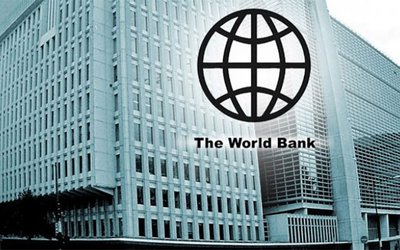
The recently concluded G20 meeting, marked by the notable absence of President Xi Jinping and President Vladimir Putin, leaders of two of the largest economies,raises concerns about the global commitment to address human-induced climate change. The absence of these leaders could potentially dilute the collective efforts needed to address critical issues like the accelerated melting of Himalayan glaciers, which sustain nearly 2 billion people in South and Southeast Asia and face imminent peril due to rising global temperatures. The G20 is a group of twenty of the world's largest economies that meets regularly to coordinate global policy on trade, health, climate, and other issues.
The warming climate has led to a significant increase in the melting rate of Himalayan glaciers. Studies indicate that since the early 21st century, Himalayan glaciers have been losing ice at an alarming pace. This accelerated melting negatively affects both regional water resources and ecosystems. It leads to increased risk of flooding during monsoons, followed by reduced water supply during drier periods, affecting millions of people who depend on these rivers for agriculture, domestic use, and hydropower generation.
Additionally, the Himalayan region is recognized as one of the world's biodiversity hotspots, providing habitat for a diverse range of species. Climate change disrupts these delicate ecosystems and pushes species towards extinction. As glaciers retreat, they alter the water availability in downstream river basins, impacting vegetation, wildlife, and aquatic ecosystems. The loss of these unique ecosystems not only threatens biodiversity but also compromises the livelihoods of local communities.
Furthermore, rising temperatures in the Himalayan region have led to the destabilization of slopes due to the increased frequency of meltwater-induced landslides and glacial lake outbursts. These phenomena create large volumes of debris and floods, posing significant risks to communities living in the valleys downstream. The threat of flash floods, landslides, and avalanches has increased, endangering human lives, infrastructure, and agricultural lands.
The Melamchi Water Supply Project in Nepal is a classic example and a reminder of the challenges of building such infrastructures in areas affected by climate change, a large-scale infrastructure project that aimed to provide drinking water to Kathmandu Valley. However, the project faced several setbacks, failures, and mismanagement over the past three decades. The project took over 25 years to complete and cost over USD 800 million. Unfortunately, the project had to be stopped after six months due to a landslide caused by heavy rainfall that damaged its headwork. This incident has raised concerns about the feasibility of such projects in mountainous regions that are affected by climate change and glacier dynamics. The project's failure has also raised questions about the credibility of the Asian Development Bank (ADB), which was entrusted with quality assurance. Nepal, already one of Asia's poorest countries, now faces additional loans to rectify the damage and design flaws.
The lessons from the Melamchi Water Supply Project could echo around the globe, as development banks and civil engineers evaluate other large projects in the developing world for their ability to withstand the vagaries of human induced climate change, and consider how to bring accountability when they fail.
As the Himalayan glaciers continue to melt, the future availability of water resources in the region becomes a major concern. The rivers originating from the Himalayas provide water to more than 2 billion people across multiple countries, including China, India, Nepal, Bhutan, Pakistan, Laos, Myanmar, Thailand, Vietnam and Bangladesh. The melting of the Himalayan glaciers due to climate change poses a significant threat to the water security of nearly two billion people who rely on them for their livelihoods. Moreover, the melting of the Himalayan glaciers could also lead to potential conflicts over water resources.
The absence of leaders with significant influence, such as President Xi Jinping and President Vladimir Putin, at the G20 meeting raises doubts about the global resolve to address climate change. Given that G20 countries collectively account for nearly 80% of greenhouse gas emissions, their commitment to mitigating climate change is crucial in safeguarding regions like the Himalayas.
While the International Centre for Integrated Mountain Development (ICIMOD) plays a pivotal role in advancing knowledge and practices related to the cryosphere in the Hindu Kush Himalaya region, there remains a critical need to establish a dedicated Center for Glaciers. This proposed center would serve to complement and enhance the efforts of ICIMOD. Even though ICIMOD serves as an invaluable institution in the broader context of mountain development, the establishment of a Center for Glaciers would provide a specialized platform with a laser focus on glacier-related research and conservation efforts.
The situation is dire, and the need is urgent to mitigate the effects of human induced climate change on the glaciers and their ecosystems. The establishment of an intergovernmental organization targeted to study the glaciers in the Himalayas is necessary to prioritize the preservation of the glaciers and their ecosystems and work towards aiding and solutions to the most vulnerable communities in the region.
Such an organization would be necessary to coordinate research and develop strategies for mitigating the effects of climate change on the glaciers. This organization should be established in Kathmandu, Nepal, to take advantage of the expertise and resources available in the region. The organization should work towards mitigating the effects of climate change on the glaciers and their ecosystems. The organization should also work towards aiding and solutions to the most vulnerable communities in the region, ensuring their resilience in the face of climate change. The organization should collaborate with governments, civil society, and international organizations to formulate effective adaptation plans, mobilize climate finance, and promote technology transfer to support the affected Himalayan nations. The organization should also prioritize the preservation of the glaciers and their ecosystems.
The glaciers are a vital source of water for ten countries, and the loss of these glaciers could lead to water insecurity and conflicts over water resources. The collective efforts of the global community can make a difference in securing a sustainable future for the Himalayas. Immediate action is needed to mitigate the effects of climate change on the glaciers and their ecosystems and to prevent potential conflicts over water resources.
Enter COP28:
As the world aims to limit global warming to well below 2 degrees Celsius, COP28 already faces a trust crisis as the G20s countries are accountable for almost 80% of global greenhouse gas emissions, yet they failed to agree on capping emissions and phasing out fossil fuels. For the Himalayan region, COP28, representsanother opportunity for countries to prioritize the preservation of the glaciers and their ecosystems. Mitigation efforts such as reducing greenhouse gas emissions, increasing renewable energy adoption, and incorporating sustainable land-use policies are crucial in safeguarding this fragile environment.
International collaboration is key to addressing the Himalayan glacier crisis. It is imperative that governments, civil society, and international organizations work together to formulate effective adaptation plans, mobilize climate finance, and promote technology transfer to support the affected Himalayan nations. COP28 should emphasize the importance of establishing an Intergovernmental Center for Glaciers and aiding and solutions to the most vulnerable communities in the region, ensuring their resilience in the face of climate change.
To conclude, the melting of Himalayan glaciers presents a dual challenge, with potential for both environmental devastation and conflicts over scarce resources. Establishing a regional institution focused on Himalayan glacier studies and implementing mitigative measures is a powerful and technically sound solution to address these urgent issues. Through cooperation and collective action, we can protect the Himalayan glaciers and pave the way for a sustainable future in the region, ensuring the well-being and prosperity of present and future generations. The impact of climate change on the Himalayan glaciers is an urgent global concern. COP28 offers a pivotal opportunity for the international community to redouble their efforts in safeguarding these majestic glaciers, preserving biodiversity, and securing the water resources upon which countless lives depend. Time is of the essence, and the collective efforts of the global community can make a difference in securing a sustainable future for the Himalayas and our planet.

Arup Rajouria
is an internationally recognized expert in climate change and natural resources management, with an impressive career at renowned organizations such as the former CEO of NTNC's CEO, UNDP, UN-Habitat, UNEP, and USAID. He obtained an MPA degree from Harvard
- 2024: A Year Of Missed Opportunities- A Call For Transformative Climate Action In 2025
- Dec 31, 2024
- Himalayan Meltdown: Threat Beyond Borders
- May 10, 2024
- Navigating The River of Doubts: The Evolving Dynamics Of India-Nepal Water Relations
- Jan 08, 2024
- A Cry From The Himalayas: Echoes Of Hope And Compromise At COP-28
- Dec 21, 2023
- Climate Crisis: Can world Leaders Rise to the Challenge ?
- Nov 17, 2023













